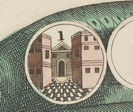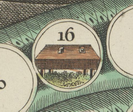Giochi dell'Oca e di percorso
(by Luigi Ciompi & Adrian Seville)
(by Luigi Ciompi & Adrian Seville)

|
Giochi dell'Oca e di percorso
(by Luigi Ciompi & Adrian Seville) |

|
 |

Torna alla ricerca giochi (back to game search) |
 |
| Royal (The) Pastime of Cupid, or Entertaining Game of the Snake | ||
 |
Versione stampabile
 |
Invia una segnalazione

|
                    |
primo autore: | Anonimo |
| secondo autore: | Robert Laurie - James Whittle - Richard Holmes Laurie | |
| anno: | 1794 | |
| luogo: |
Inghilterra-Londra |
|
| periodo: | XVIII secolo (4°/4) | |
| percorso: | Percorso di 63 caselle numerate | |
| materiale: | carta (paper) (papier) | |
| dimensioni: | 460X589 | |
| stampa: | Acquaforte (taille-douce) (ecthing) | |
| luogo acquisto: | ||
| data acquisto: | ||
| dimensioni confezione: | ||
| numero caselle: | 63 | |
| categoria: | Amore, matrimonio e famiglia | |
| tipo di gioco: | Gioco di percorso | |
| editore: | Published 12 May 1794 by Laurie&Whittle N°53 Fleet Street, London | |
| stampatore: | Published 12 May 1794 by Laurie&Whittle N°53 Fleet Street, London | |
| proprietario: | Bodleian Libraries, University of Oxford | |
| autore delle foto: | Digital Bodleian | |
| numero di catalogo: | 2488 | |
| descrizione: |
Gioco di 63 caselle numerate, spirale, orario, centripeto che ha la forma di un serpente. Questo gioco forse si ispira ad un gioco della metà del XVIII secolo realizzato da Robert Sayer, mercante di carte e di stampe a cui successero nel 1794 Robert Laurie & James Whittle e nel 1813 Richard H. Laurie. L'antico gioco egiziano del serpente, di forma spirale, può aver ispirato molti giochi di società, ma le regole rimangono ancora sconosciute. Nel Gioco del Serpente alla casella 63 (“The Delightfull Garden of Cupid") si può osservare: - tre coppie di amanti con Cupidi fra le nuvole (De Jode Pieter 1620ca / Veuve Petit 1640ca); - Cupido che affila la punta della sua freccia in un giardino (Laurie&Whittle, 1794 / Lumsden, 1810-1830ca / R. H. Laurie,1850ca); - una coppia contadina che balla accompagnata da un Cupido che suona uno strumento (Visscher, 1625ca / Garrett, 1690ca / Dicey, 1736-40); - un Cupido da solo con il suo arco (Carington Bowles 1756 / Bowles&Carver 1763-1780ca); - due personaggi che giocano a tavola in presenza di un Cupido (Anonimo XVIII° secolo). In questo esemplare si nota al centro Cupido che affila la punta della sua freccia; una delle coppie di dadi su tavolo è al 26 anzichè al 25. In basso a sinistra: "Published 12 May 1794 by Laurie&Whittle N°53 Fleet Street, London" e a destra "Where may be had the Royal and Entertaining Game of the Goose". Non esiste una versione italiana di questo gioco ad esclusione de "Il Novo et Piacevol Gioco del Giardin d’Amore (Arch. n°1105) che a parità di tema si gioca però come il gioco della civetta. REGOLE: ai lati del tavoliere. CASELLE: mute. Cas. 1) Porta; Cas. 5) Ponte; Cas. 7) Cupido; Cas. 12) Sedia; Cas. 14) Cupido; Cas. 16) Tavolo con dadi (6+1); Cas. 18) Cupido; Cas. 21) Cupido; Cas. 26) Tavolo con dadi (5+2); Cas. 28) Cupido; Cas. 30) Fontana; Cas. 35) Cupido; Cas. 38) Cupido; Cas. 42) Cupido; Cas. 43) Tavolo con dadi (3+4); Cas. 46) Labirinto; Cas. 49) Cupido; Cas. 54) Bosco; Cas. 56) Cupido; Cas. 59) Sepolcro; Cas. 63) Cupido che affila la punta della sua freccia in un giardino. NOTA vedi esemplari: Arch. n°862, Arch. n°1240, Arch. n°1309, Arch. n°2341, Arch. n°2342, Arch. n°2354, Arch. n°2487, Arch. n°2489, Arch. n°2490, Arch. n°2518, Arch. n°2519. REFERENZA 1 The Royal Pastime of Cupid, or Entertaining Game of the Snake (Digital Bodleian). REFERENZA 2 The rules of the game The rules explain that the cupids in every seventh circle represent a favourable space, where one cannot halt and has to advance the number thrown with the dice until a space without a cupid is reached. The combination of the numbers on the two dice could determine an advantage as one could proceed to the space with an image of the dice. The Game of Cupid has three such fortunate combinations, in which the number thrown makes up seven. As a metaphor of the course of life, hazards can also be encountered, again seven in total. These are basically the same as in the Game of the Goose, although they occur on different spaces and there are some differences in the icons and their meaning. In the Game of Cupid, the bridge of love, la puente del Amor, means one has to pay a tribute to Cupid and can advance to space 12 to rest in the depicted chair. The throne of love in space 18 has the same function as the inn in space 19 of the Game of the Goose; one has to pay a fine and skip a turn. The same applies for the banquet in space 38 of the Game of Cupid and the prison in space 52 of the Game of the Goose. The well or fountain in spaces 30 and 31 are identical; a fine is to be paid and one is only released when another player arrives on the same space or else one stays there until the end of the game. The Game of Cupid has an additional icon in space 54, the forest, which has the same rule. The labyrinths in spaces 42 and 46 are similar, although the hazard is more severe in the Game of Cupid; a prize is to be paid and one has to return to space 39 and 23 respectively, which means a setback of just three over 23 spaces. Obviously, the skeleton or tomb on spaces 58 and 59 in both games mean death, the most severe hazard; one pays a fine and has to start over. As compared with the Game of the Goose, the Game of Cupid has one additional, advantageous rule: the number 7 is favourable and privileged in this game, so the one who throws it, and reaches the throne, the well, the banquet, the labyrinth, the forest, or the tomb, shall pay nothing, shall not stay there nor go back, but shall only double his number until he is in a safe space. The player who is the first to arrive exactly at number 63, wins the game and collects all the fines payed. Since number 63 - the central image - represents the garden of love where winged cupids aim their arrows at the couples, who knows what other pleasant prize the winner could look forward to! (Marjolein Leesberg) REFERENZA 3 The Royal Pastime of Cupid, or Entertaining Game of the Snake, London: Robert Laurie and James Whittle, 1794, 46 x 38 cm. (Yale University GV1199 .R69 1794.) HOW TO PLAY THE GAME: This is the oldest board game in the Liman collection. The object of the game was for the player to move through the snake’s serpentine course to reach the Garden of Cupid at the end. Along the way were multiple hazards, with forfeits that included losing a turn, moving back a number of spaces, or giving up counters to the pool. The most dangerous square was the Coffin (square 59), sending the player back to the start. (Patrons) Exhibitions: - "Instruction and Delight: Children's Games from the Ellen and Arthur Liman Collection" (Yale Center for British Art, 17 January-23 May, 2019). |
|
| bibliografia: |
1) ALLEMAGNE, Henry-René D’: "Le noble jeu de l’oie en France, de 1640 à 1950", Ed. Grund, Parigi 1950. 2) BECKER, Udo: "The Continuum Encyclopedia of Symbols", New York, Bloomsbury Publishing, 2000. 3) WHITEHAUSE, F.R.B.: "Table Games of Georgian and Victorian Days", London, Peter Garnett, 1951. 4) GOODFELLOW, Caroline: "A Collector's Guide to Games and Puzzles" Secaucus, New Jersey, Chartwell Books-London, Quintet Publishing Limited 1991. 5) GOODFELLOW, Caroline: "The Development of the English Board Game, 1770-1850", in Board Games Studies 1, 1998. 6) GOODFELLOW, Caroline: "Jeux de société. Le guide du collectionneur des jeux de société depuis le XVIIIe siècle jusqu’à nos jours", (Edizione francese) Carrousel MS, 2001. 7) BUIJNSTERS, P. J. - BUIJNSTERS-SMETS, Leontine: "PAPERTOYS. Speelprenten en papieren speelgoed in Nederland (1640-1920)". Waanders Uitgevers-Zwolle, 2005. 8) DEPAULIS, Thierry: “Trois jeux imprimés du début du XVIIe siècle par la veuve Petit à Paris.” Arbeitskreis Bild Druck Papier, Vol. 16 (Muenster: Waxmann Verlag, 2012). 9) LEESBERG, Marjolein: "El Juego Real de Cupido: a Spanish board game published in Antwerp, c. 1620." In: "Delineavit et Sculpsit" n°39, 2015. 10) SEVILLE, Adrian: "The Royal Game of the Goose four hundred years of printed Board Games". Catalogue of an Exhibition at the Grolier Club, February 23 - May 14, 2016. 11) DUGGAN, Eddie: "The Royal Pastime of Cupid: three early printed board games in the Bodleian Library's, John Johnson Collection of Printed Ephemera". University of Suffolk Department of Science and Technology, 2017.(Duggan Eddie). 12) DUGGAN, Eddie: "Chasing Geese: “The Royal Pastime of Cupid or Entertaining Game of the Snake” (SFHEA University of Suffolk, UK), Board Game Studies Colloquium XX. University of Copenhagen 17-20 May 2017.(Duggan Eddie). 13) ANDREWS, Jeanmarie: "Early Board Games.The Game of Education." In: "Early American Life". Volume 48, Christmas. Ohio November 2-5, 2017. 2017. 14) LIMAN, Ellen: "Georgian and Victorian Board Games: The Liman Collection", Pointed Leaf Press, pag. 14, 66, 2017 (pages 14, 66). 15) NORCIA, Megan A.: "Gaming Empire in Children's British Board Games, 1836-1860". Studies in Childhood, 1700 to the Present. Routledge, 2019. |
|
| The Royal Pastime of Cupid or Entertaining Game of the Snake | ||
| The symbolic significance of the number seven (Marjolein Leesberg) | ||
Vai alla ricerca giochi Vai all'elenco autori